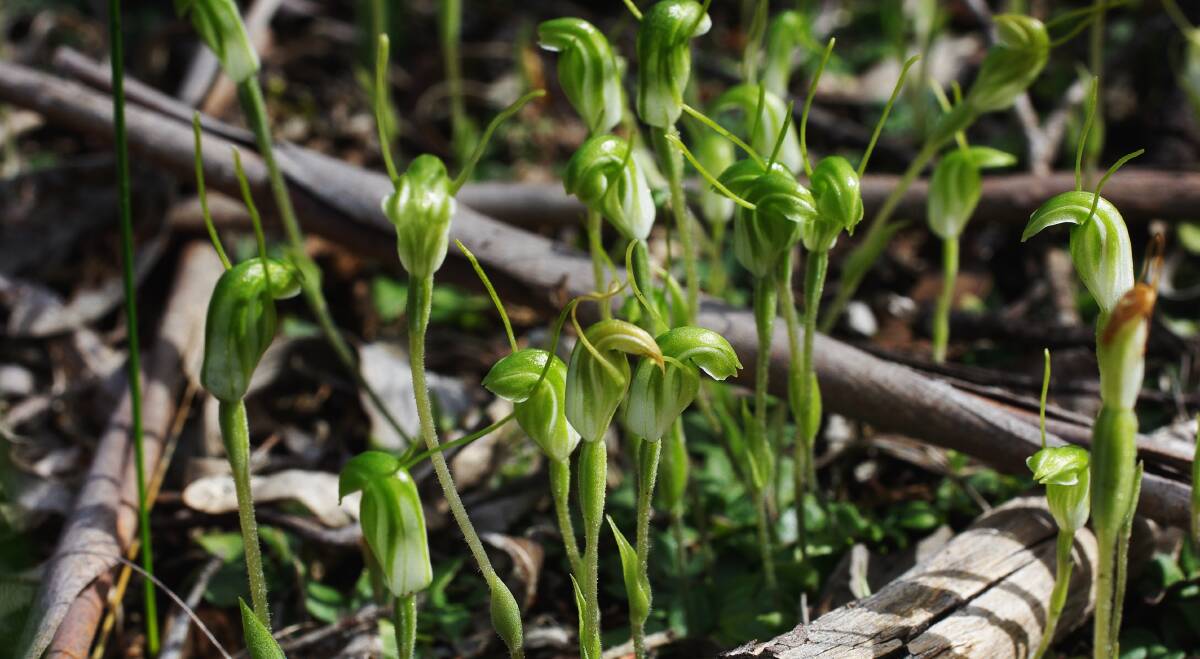
Several species of flowering native orchids indicate spring is not far away.
Subscribe now for unlimited access.
or signup to continue reading
Leopard orchids, helmet orchids, blue fairies and a few greenhoods have all been reported in the past couple of weeks.
The accompanying photo shows part of a group of dwarf greenhoods found earlier this week at Bannockburn. Others were found at Enfield a week earlier.
Like some of the other greenhood orchids – such as the nodding greenhood – the cutely upright dwarf greenhood is colonial, found more often in groups than as isolated single individuals.
Plants live up to their name by being mostly shorter than 8cm.
The dwarf greenhood is a plant of drier forests. Fortunately, it remains fairly common.
Blue fairies are also found in drier forests, but they are less common.
Very similar to the common pink fingers orchid, they are an attractive sky blue, with flowers appearing earlier. Only a few flowers were found at the site of the blue fairies (blue caladenias) last year. But this year there are hundreds of these attractive little blue “finger orchids”. Perhaps they have responded positively to this year’s better autumn and winter rains.
Helmet orchids are uncommon locally.
They are easily missed because of their small size – their open, helmet-shaped flowers have very short stems. They are only about 10mm wide and 15mm tall.
The first butterflies and dragonflies – and blowflies – have also appeared, another sign that spring is near.
BLUE YABBIES
Most local yabbies are a dull khaki brown, so the discovery of a blue yabby claw at Snake Valley was a matter of interest to the finder.
Blue yabbies are found from time to time over much of the Ballarat district, in small farm dams to larger bodies of water such as Lake Wendouree.
They may be more numerous now than they were 20 or 30 years ago.
Until relatively recently, I regarded these bluer yabbies as crustaceans of the Murray Valley rather than of the Ballarat district.
But they are obviously well established here now, including south of the divide.
The basal segments of the claws of these yabbies are more spiny or serrated than are those of the usual dull-coloured yabbie.
However, it seems that both colour forms belong to the same species.
In recent years, the typical yabbie has been “improved” for the pet trade, with a bright blue variety now available to brighten up the aquarium.
This is a brighter blue than the greenish-blue of the wild specimens found in local wetlands.













